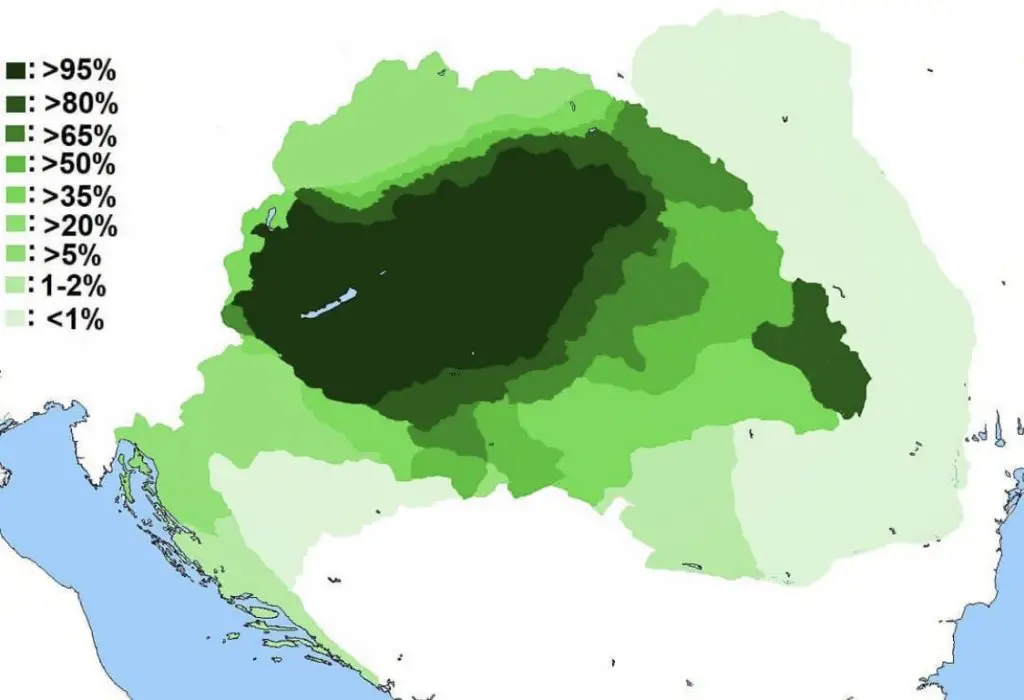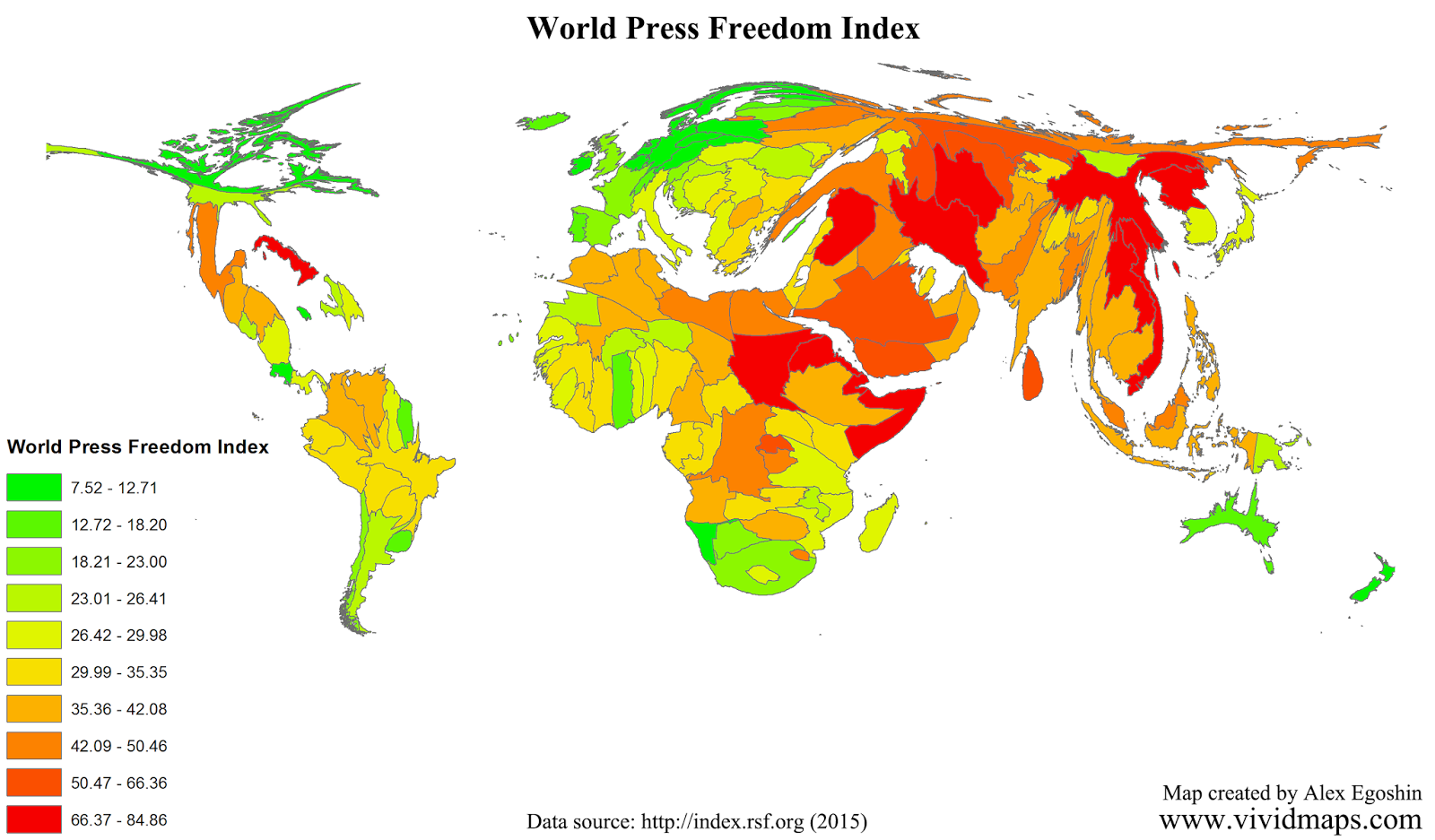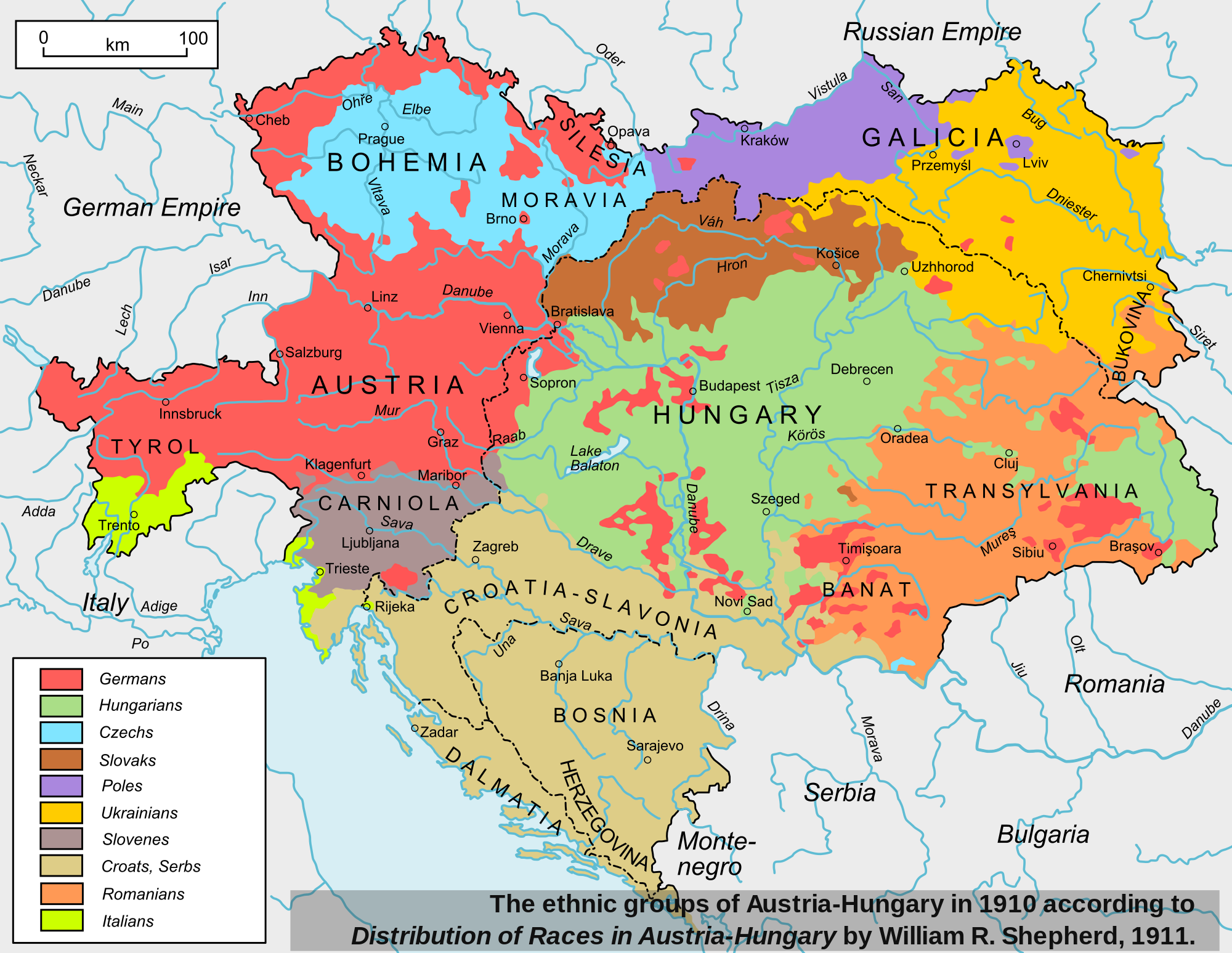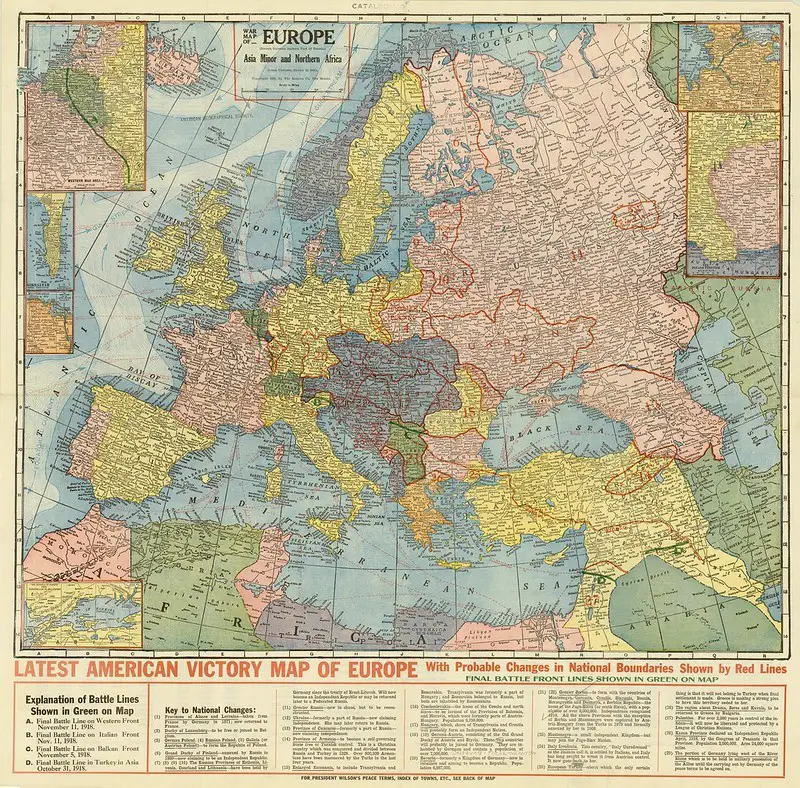Hungarian Maps From 1920 Protesting The Treaty of Trianon
Austro-Hungarian Empire was a constitutional monarchy that appeared in Central and Eastern Europe in 1867. Empire was a multinational state and was formed due to the unification of Austria (Cisleithania) and Hungary (Transleithania).

The Cisleithania (Austria) had a population of 29 million in 1910 and an area of 300,005 km2 (115,833 sq mi). The Cisleithania included Vorarlberg, Galicia, Lodomeria, Bukovina (region of Ukraine), Bohemia, Dalmatia, and Istria (regions of Croatia), Montenegro, Czechia, Slovenia, southern Poland, Italian Trieste, Gorizia, and Trentino-Alto Adige.
Transleithania (Hungary) had a population of 21 million in 1910 and an area of 325,411 km2 (125,642 sq mi). Transleithania consisted of the Kingdoms of Hungary, Croatia, Slavonia, Principality of Transylvania, Voivodeship of Serbia.
The Austrian and Hungarian lands were equal in power.
The Empire was the second-largest nation in Europe after Russia and the third-most populated after the Russian and the German Empires. After World War I, the Austro-Hungarian Empire disintegrated into Austria, Hungary, Yugoslavia, and Czechoslovakia.
The Treaty of Trianon was the peace pact (1920) that ended WWI within the Allies of WWI and the inheritor states to the Austria-Hungary Empire. The Treaty set the status of a sovereign Hungary and established its boundaries. The country lost nearly 75 percent of its territory. It left Hungary as a landlocked country that covered 93 thousand square kilometers (35 thousand square miles), only 28 percent of the 325 thousand square kilometers (125 thousand square miles) that had set the pre-first world war Hungarian half of the Austro-Hungarian Empire.
The new Hungary had no direct access to the Mediterranean Sea, which is many ports. The post-Trianon country had only 38 percent of the railroads. All this had a significant impact on her weakened economy.
Its population was 7.6 million, only 36 percent of pre-world war Hungary’s population of 21 million, and 33 percent of the ethnic Hungarians were under foreign authority (1.6 million in the Transylvania region of Romania, 0.9 million in new Czechoslovakia, and 0.4 million in Serbia, etc.).
Later, the percentage and the total population of all Hungarians outside of Hungary declined in the following decades. This decline happened due to assimilation and specific state policies, like ‘Serbianisation,’ ‘Slovakization’ and ‘Romanianization.’
The agreement restricted Hungary’s army to 35 thousand soldiers, and the Navy and air force ceased to exist. Besides, Hungary had to pay war reparations to its neighbors.
The principal objective of the pact’s agreement was the principle of “self-determination of nationalities,” and it was an effort to give the non-Hungarians their national lands.
The present-day borders of Hungary are equal to those set by the Treaty of Trianon.
The fact that about 3/4 of the country and an enormous number of ethnic Hungarians were attached to neighboring nations triggered significant pain for Hungarians. All state flags in Hungary were lowered until 1938.
Maps below are an effort to explain what this would convert to if the same thing happened to France, Italy, the United Kingdom, the United States, and the German Empire.
The Hungarian Government spread these maps to foreign locals, disagreeing about the injustice of the Treaty of Trianon.


Almost a hundred years later, the Treaty of Trianon was signed, it continues one of the most traumatic episodes in Hungary’s collective memory.
1000 Hungarians were asked to mark areas they consider Hungarian









